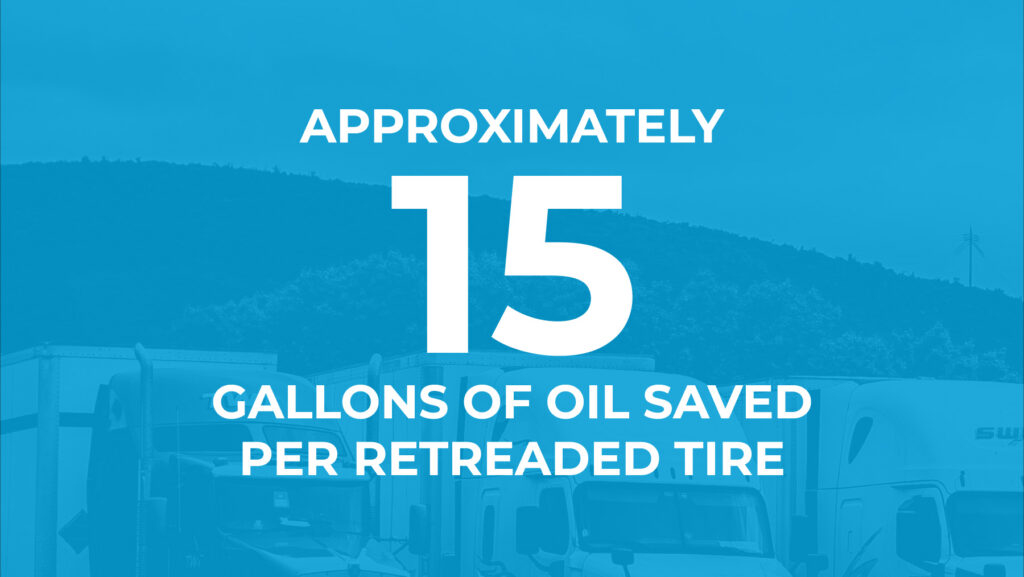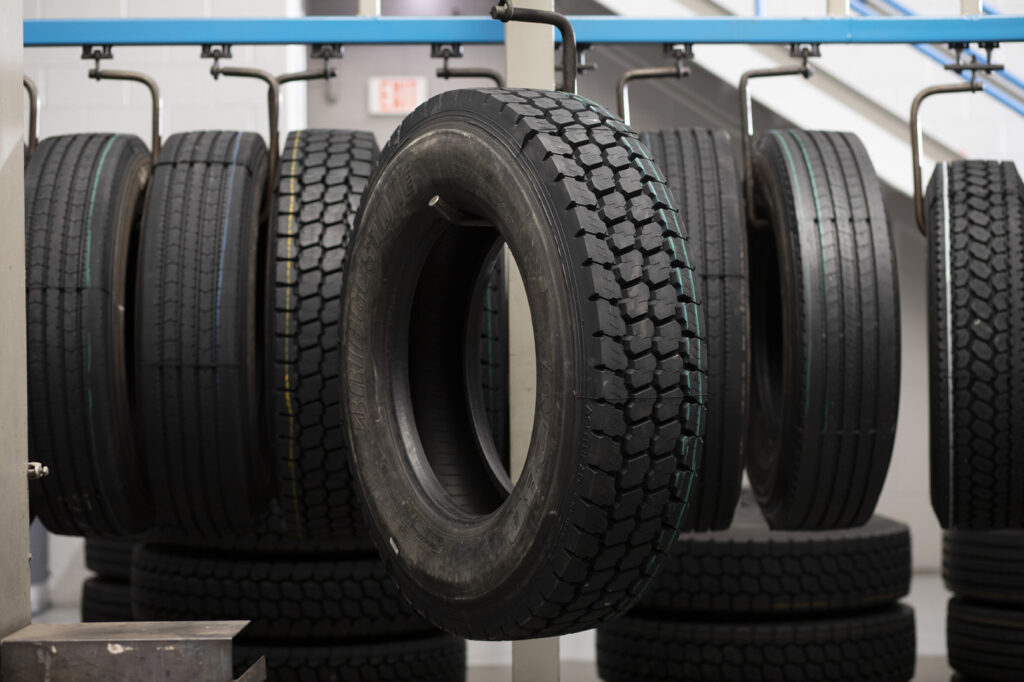
The retreading industry is known for its cost-effectiveness, but just how much would you be saving? There are several things to consider beyond just the price when it comes to evaluating your cost savings with retreading.
Retread tires, also known as remanufactured, remolded, recapped, or refurbished tires, are tires that have undergone a retreading or remanufacturing process, where the old, worn tread is replaced by a new tread. This process extends the life of premium tires by preserving the tire body (or casing) and replacing the tread.
The two most common retreading processes are mold cure (sometimes called hot retreading) and precure (sometimes called cold retreading). See how these processes differ.

Retread tires cost anywhere from 30-50% less than the price of a quality new tire. Because most of the manufacturing cost of a new tire goes into the tire casing, the tread is only a fraction of a new tire’s cost. This means that retreading allows you to save on tire replacement costs by only replacing the tread on worn casings you already own.
Remanufacturing your tires extends their lifetime value and allows you to get more miles out of your tire casings. You can expect AcuTread® products to perform just as well as, if not better than new premium tires do—delivering the same mileage and safety benefits. With the proper maintenance, you can retread your tires repeatedly—offering them a lifetime of up to 600,000 miles vs the 100,000-mile lifespan without!
NOTE: Send your tires in for retreading BEFORE they get down to the legal minimum tread depth (4/32” for steer tires and 2/32” for drive and trailer tires) to ensure they qualify.
Depending on the application and use, tires can be retreaded anywhere from 2 to 5 times (or more with proper maintenance). Retreading your tires instead of buying new tires adds up over time, saving you 30-50% each time.

Tires remanufactured with state-of-the-art retreading processes are just as safe as new tires. The remanufacturing process meets the same standards as the original tire manufacturing process and follows many of the same steps. Retreaded tires are manufactured with only certified materials and undergo multiple vigorous inspections.
When it comes to appearance, aesthetics, and performance, tires that are remanufactured with advanced retreading processes can both look and perform as well as new tires.
For more information, Wonderland Tire, a co-developer of the AcuTread® process, answers the question “Are Retreads Safe?” in their guide to remanufactured tires and their benefits.
Remanufactured tires have come a long way, now providing similar, if not better, fuel efficiency when compared to new tires. The AcuTread® product is no exception! Thanks to our specially formulated rubber compounds and properly buffed casing dimensions, AcuTread® remanufactured tires have superior fuel efficiency, adhesion, longevity, and cut resistance. View our low rolling resistance models that meet the United States Environmental Protection Agency’s requirements for size, performance, and testing.
Learn more about low rolling resistance remanufactured tires.

Choosing to retread goes beyond just cost savings, delivering massive environmental savings as well. “A retread tire uses 15 gallons less oil and approximately 90-100 pounds less total material than a new tire. The U.S. and Canada tire retread industry, therefore, saves approximately 217.5 million gallons of oil and delivers 1.4 billion pounds of landfill avoidance on an annual basis,” said David Stevens, Managing Director of Tire Retread & Repair Information Bureau (TRIB).
Proper maintenance is essential for extending the longevity of your tires. Maintaining proper inflation, completing regular tire rotations, and avoiding road hazards can all help ensure your tire casing remains at retreading quality.
Learn more about preserving your fleet’s tire casings.

The AcuTread® remanufacturing process is a highly advanced retreading system, engineered second to none. It allows us to produce tires that are built expertly for safety, uniformity, reduced heat buildup, and longer tread life.
Contact us to discover just how much you could be saving each year with AcuTread!
Interested in retreading your tires with an AcuTread manufacturer? We have dealers located across Michigan, Illinois, Indiana, Ohio, Kentucky, Tennessee, and Virginia. Find an AcuTread dealer near you.
Contact us for more information about our products, remanufacturing process, facilities, or solutions for your fleet.
Website by Northbound Studio